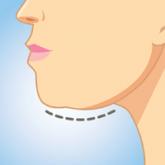Cosmetic Dermatology

Ideals of Facial Beauty
Facial aesthetic procedures are central to cosmetic dermatology. Success depends not only on improving individual structures but also on...
Dr. Boddu is from the New York University School of Medicine, New York. Drs. Hashim, Nia, Farberg, and Goldenberg, as well as Ms. Horowitz, are from the Department of Dermatology, Icahn School of Medicine at Mount Sinai, New York. Dr. Goldenberg also is from Goldenberg Dermatology, PC, New York.
Drs. Boddu, Hashim, Kia, and Farberg, as well as Ms. Horowitz, report no conflict of interest. Dr. Goldenberg is a consultant for Eclipse Aesthetics.
Correspondence: Gary Goldenberg, MD, Goldenberg Dermatology, PC, 14 E 75th St, New York, NY 10021 (garygoldenbergmd@gmail.com).

In discussing the dermatologic applications of stem cell technology, clinicians should be aware of the plant stem cell products that have become a popular cosmeceutical trend. Companies advertise plant cells as a natural source of regenerative cells that can induce rejuvenation in human skin; however, there are no significant data to indicate that plant stem cells encourage or activate cellular growth in humans. Indeed, for stem cells to differentiate and produce viable components, the cells must first be incorporated as living components in the host tissue. Because plant stem cells do not survive in human tissue and plant cell cytokines fail to interact with the receptors on human cells, their current value in cosmeceuticals may be overstated.
Platelet-rich plasma also is commonly associated with stem cell therapy, as PRP is known to potentiate stem cell proliferation, migration, and differentiation. However, PRP does not contain stem cells and is instead autologous plasma concentrated with platelets. In fact, platelets cannot even be classified as cells given that they lack a nucleus; platelets are considered cell fragments. The regenerative potential of PRP can be attributed to the growth factors released from platelets, which play an important role in tissue regeneration and repair. Platelet-rich plasma currently is being used in dermatology for skin rejuvenation (reduction of wrinkles and furrows) and treatment of acne scars.38 There also is evidence supporting the effectiveness of PRP for alopecia and wound therapy, as growth factors play a vital role in hair growth and wound healing.38 Apart from the use of PRP on its own, it can be used as a supplement to enhance the effects of antiaging procedures such as microneedling.39
Multipotent stem cells and iPSCs discussed herein provide much promise in the field of regenerative dermatology. They are increasingly accessible and circumvent the use of ethically questionable embryonic stem cells. Although there is a general consensus on the great potential of stem cells for treating aesthetic skin conditions, high-quality randomized controlled trials remain scarce within the literature. Recognizing and optimizing these opportunities remains the next step in the future delivery of evidence-based care in regenerative dermatology.

Facial aesthetic procedures are central to cosmetic dermatology. Success depends not only on improving individual structures but also on...

Submental fat (SMF) accumulation is a cosmetically distressing concern for which there have been recent advances in minimally invasive and...

Many dermal fillers are available for various cosmetic rejuvenation purposes including but not limited to treatment of facial rhytides, nasolabial...
